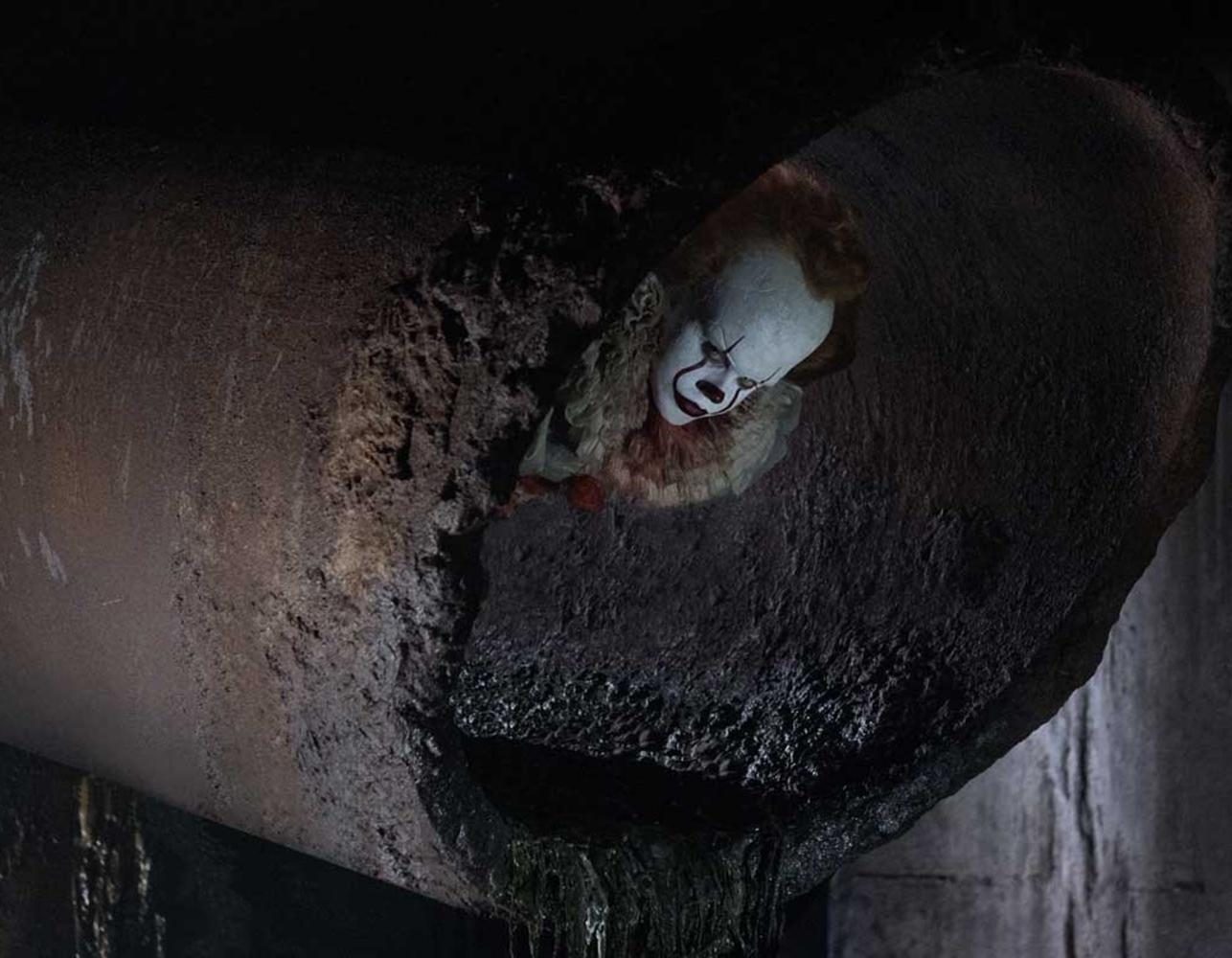‘It’ merges nostalgia with horror
Bill Skarsgard stars as Pennywise the Dancing Clown in “It,” based on the Stephen King novel of the same name. “It” has received positive reviews and currently holds an 85 percent approval rating on Rotten Tomatoes.
Sep 21, 2017
It may be lurking under your bed, skulking in a shadowy closet or even prowling through the darkened sewers on a rain-drenched evening.
To put it simply, “It” is whatever you fear the most.
No matter what “It” is for you, the feeling of dread washing over your body when confronted with your worst fear is a universally recognized sensation that most people experience from the earliest days of their youth.
This idea of childhood phobias and the intersection of nostalgia with horror is what propels Andy Muschietti’s new supernatural horror film “It,” based on the beloved Stephen King novel of the same name.
“It” takes place during the summer of 1989 in a small town in Maine and follows the story of a group of children who are terrorized by a demonic entity that takes the form of each child’s respective fear. Most often, though, the film’s titular monster appears as Pennywise the Dancing Clown (Ben Skarsgard), an evil jester that feeds on the fear of children.
Throughout “It,” the children (affectionately dubbed the “Losers’ Club”) are forced to contend with their personal demons and overcome their darkest fears in one of the most demented and genuinely terrifying horror films in recent memory.
Directing: 4/5
Although “It” was previously adapted into a two-part TV miniseries in 1990 (starring Tim Curry as Pennywise), this 2017 iteration certainly breathes new life into the source material — thanks, in large part, to Muscietti’s inspired direction.
Muscietti (who previously directed the 2013 horror film “Mama”) injects the film with a sense of dread and apprehension through the deliberate use of shadows and Dutch angles that intentionally disorient the viewer.
However, Muscietti’s masterful framing ultimately takes a back seat to the disturbing creatures that inhabit the film. Making full use of CGI, practical special effects and highly realistic makeup, “It” features some of the most original and convincingly frightening monsters to ever grace the silver screen.
The only major criticism one could draw from Muscietti’s direction is the filmmaker’s frequent and at times predictable use of jump scares to elicit screams from his audience. Still, Muscietti largely trusts in the inherent horror that many of his creatures possess and most often uses jump scares merely as a way to amplify the film’s frights, rather than manufacture them.
Writing: 4/5
When watching “It,” one rarely gets the chance to catch one’s breath, as Muscietti’s dark and unsettling compositions are nicely complemented with extremely taut pacing.
Not once does the film seem to drag, as the viewer soon becomes attached to the central group of children, which, in turn, keeps them invested in the children’s individual battles with their respective demons.
And while much of these characters’ appeal can be attributed to the talented and charismatic cast of child actors, much credit should be given to the film’s tightly constructed and thoroughly entertaining script.
Indeed, the screenplay for “It,” which was inspired by the aforementioned Stephen King novel and co-written by “Beasts of No Nation” director Cary Fukunaga, proves to be a deft blend of horror and humor.
Although much of “It” certainly resides in the realm of the horror genre, there are still countless moments in the film that provide both comic relief and backstory that only serve to endear the children to the audience even more.
It is only in some of the film’s horror sequences that “It” starts to fall into formulaic and predictable genre trappings, especially as it pertains to the aforementioned overuse of jump scares. But, by and large, “It” proves to be one of the most well-executed horror films of the year due to a brilliantly paced and emotionally affecting screenplay.
Acting: 5/5
For anyone who often feels the need to criticize child actors, I urge them to see “It,” which may be the single best showcase of child ensemble acting since 1986’s “Stand by Me.”
Jaeden Lieberher delivers a truly moving and nuanced performance as Bill, the de-facto leader of the Losers’ Club and older brother of Georgie, Pennywise’s first victim. Bill serves as the emotional center of the film, and Lieberher is stellar in bringing a surprising amount of depth and empathy to his character.
The other standouts among the child actors are Finn Wolfhard as Richie and Sophia Lillis as Bev. Wolfhard, who is best known for his starring role in the Netflix series “Stranger Things,” brings the foulmouthed Richie to life with a charismatic and memorable performance.
Lillis offers complexity and compassion to her role as Bev, the only female member of the Losers’ Club. Afflicted with a troubled home life and bullied by her classmates at school, Bev quickly becomes one of the most inspiring and courageous characters in the film.
Finally, particular praise should be directed towards Bill Skarsgard as Pennywise, whose incredibly creepy performance greatly benefits from the actor’s uncanny physicality.
Overall: 4.5/5
“It” is one of those rare literary adaptations that serves as a fitting homage to the original source material, while also offering new layers of artistic merit and emotional depth. Indeed, although “It” has seemingly reinvigorated the horror genre, the film’s true emotional core lies in its central coming of age story.
By effectively merging nostalgia with horror elements, “It” reminds us that although our childhood fears may always be with us, they don’t necessarily define who we are. Instead, our fears and phobias merely shape us as we choose to either overcome them or be dragged down deep into the darkness where they reside.









